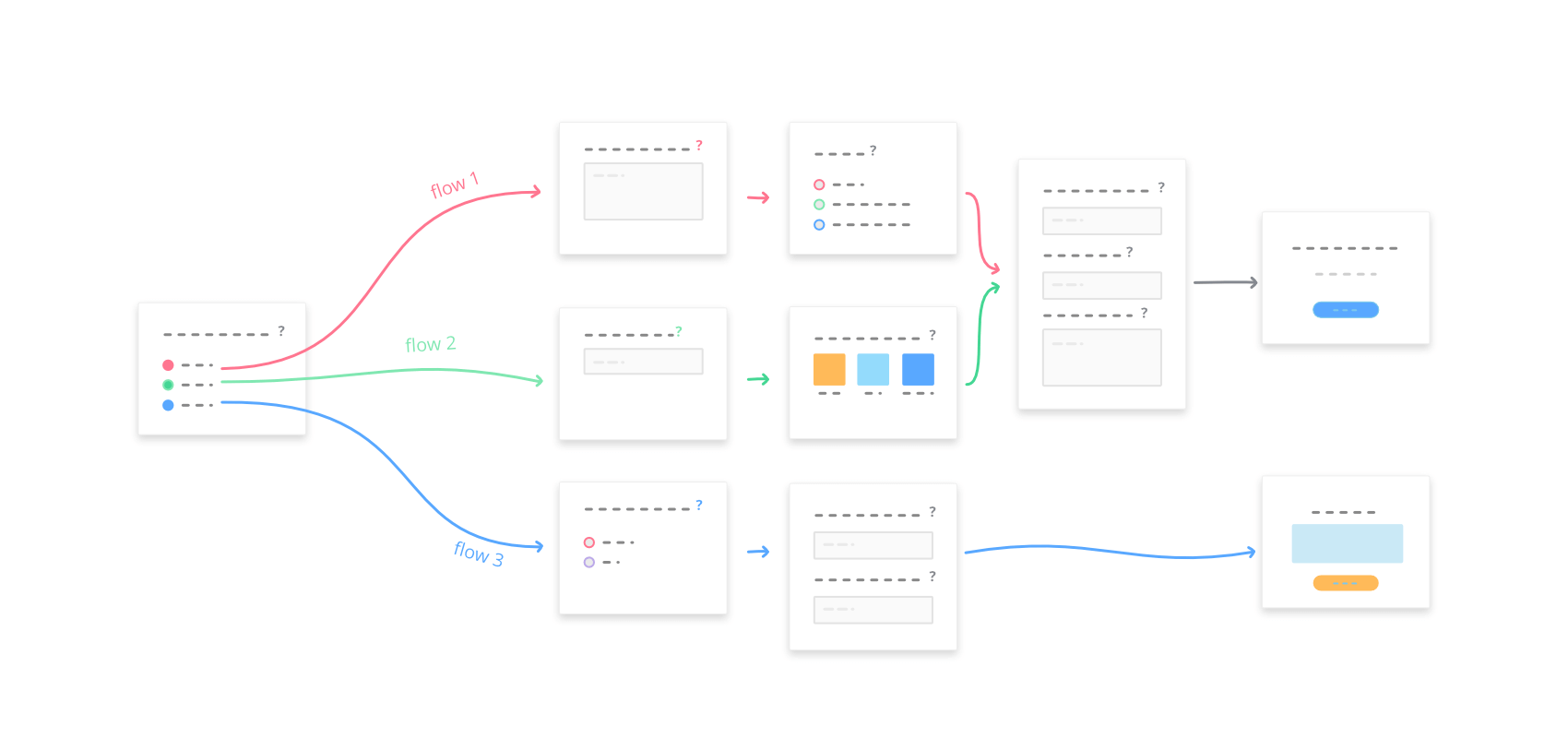 What is a survey logic flow
What is a survey logic flow
A logic flow is a set of one or more rules that you design for your survey, form, or questionnaire. Generally speaking, these rules will define what should happen, under special circumstances.
For example, if you create a health survey which includes gender specific questions, then you can design a logic flow that automatically hides questions that are relevant for male gender, when respondents are female, and visa versa.
This was just a simple example to explain the concept of logic flows. However, SurveyLegend empowers you to easily create powerful and very advanced survey logic flows. You can combine several logic rules, and ask our system to perform several actions and consequences, based on respondents answers, geo-location, and other information.
With our “Logic Flows” not only you can do everything that other survey tools offer under different names & titles, but also you can go further beyond that and enjoy creating smart survey in a super-easy-designed tool!
What is a logic flow made of
A logic flow has two major sections, “IF” and “THEN”.
The “IF” part is where you define all conditions that are required for an action to take place. And the “THEN” part is where you define the action which should take place as a result.
For example, in the “IF” section, you can tell the system:
If a respondent’s answer to question “2. What is your gender?” is “Male”…
and in the “THEN” section, you can say:
Then, hide the second page of my survey (which only contains questions for female respondents).
It is even possible to set several conditions (IFs) in the “IF” section, and several consequences in the “THEN” section. We will go through these later on in this user guide, but let’s talk about enabling and managing the logic flows in your surveys first.

 Sign up, it's free!
Sign up, it's free!